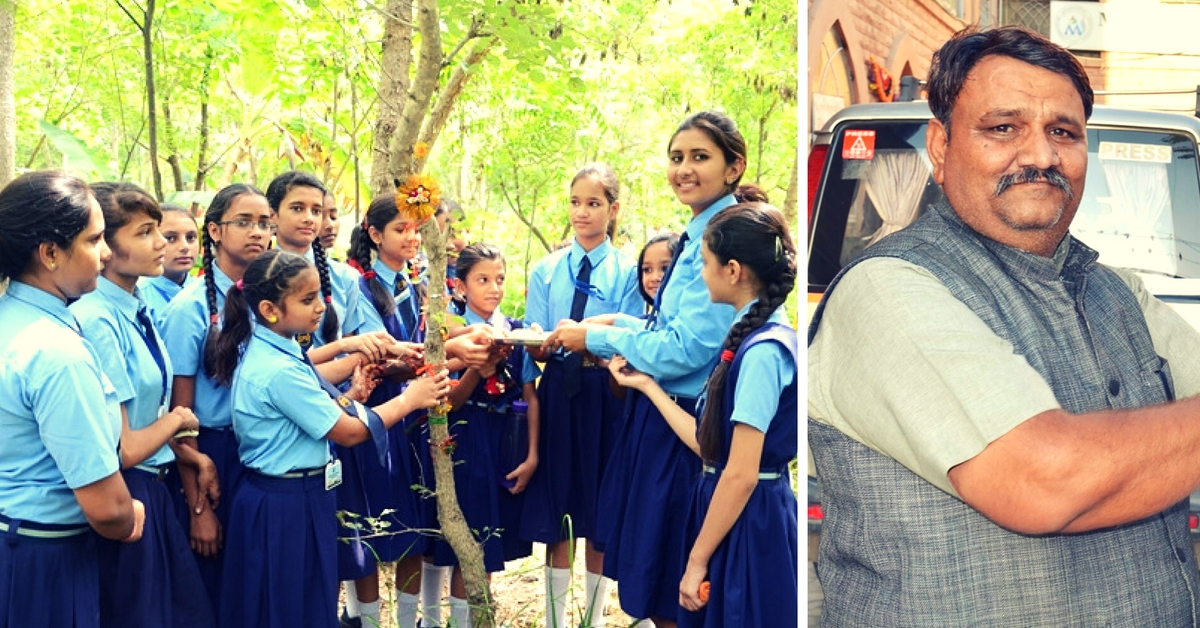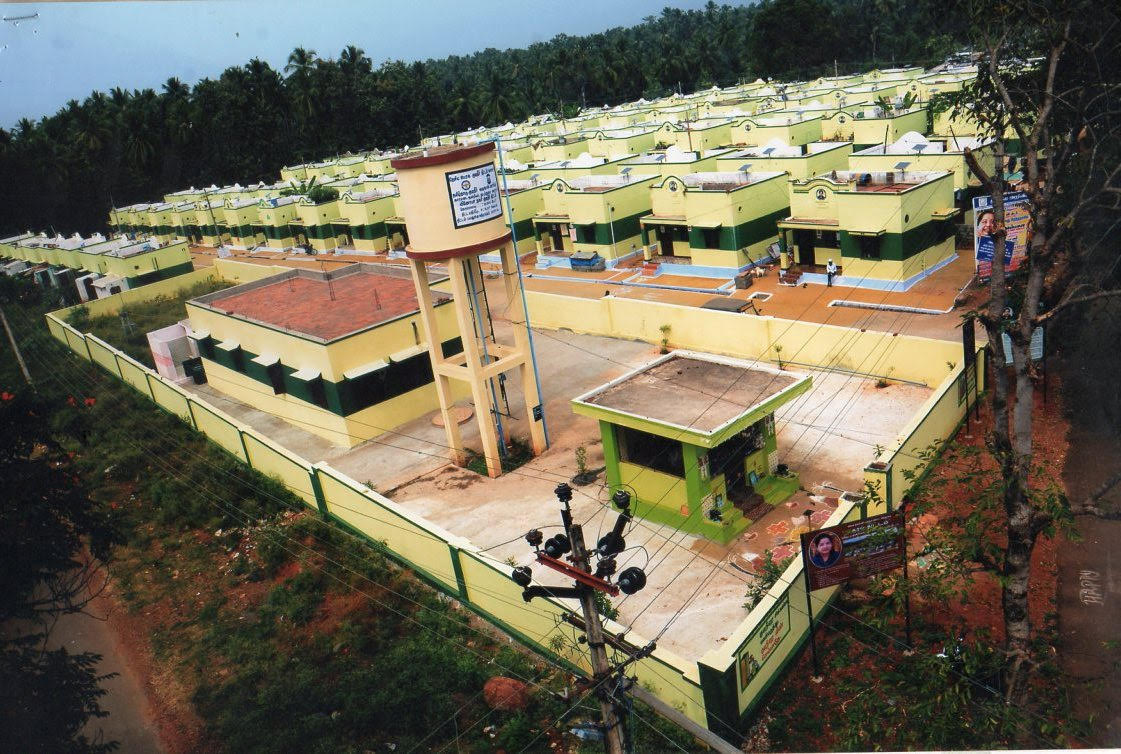5 Inspiring Indian Villages That Are Smashing Stereotypes!
“There were 328 BPL (Below Poverty Line) families in the village. They had neither house nor land. I could uplift them to APL (Above Poverty Line). I think as a Sarpanch that was my biggest achievement and my happiest memory.”

The word progressive is not something one associates with Indian villages which are infamous for being hotspots for gender discrimination, female foeticide, child marriages and rampant illiteracy, yet one cannot deny the fact that such problems persist in urban areas too.
In this article, we bring to you five such villages that are such shattering long-held stereotypes and are, in fact, adopting norms of inclusivity and social empowerment.
Here’s your chance to reduce plastic consumption. Check out these products which are all a great substitute to plastic.
1. Piplantri, Rajasthan
Stereotype broken: Gender
It is a known fact that female foeticide and infanticide are common in many parts of India. While there are stringent laws and harsh punishments for this heinous crime, these do not seem to act as deterrents.
But, Piplantri’s sarpanch celebrates the birth of a girl child. Shyam Sunder Paliwal has made it a rule for the family members to celebrate the birth of a girl by planting 111 trees in the village and nurturing them for 18 years.
His logic is that if they nurtured the trees for 18 years, then the sale of wood from the trees would enable the family to bear the expenses of the girl’s wedding and also generate oxygen and add protection to soil for a considerable time. Also, the sarpanch adds, the ongoing process would always mean a never ending cycle of tree-growing in the village.
The village panchayat takes care of these saplings so that the efforts of the relatives do not go waste. Women self-help groups, elderly ladies, grandmothers, aunts etc. contribute to their maintenance. Along with planting trees, a fixed deposit is also made in the girl’s name by the parents, donors and amount from government schemes. This money comes in handy for the girl’s education and future.
This is just one such scheme adopted by this village; to read more about it, click here.
2. Sangam Village
Stereotype broken: Animal care

Located close to the Indo-Tibetan border in the Trans-Himalayan belt of Himachal Pradesh, Sangam village has a unique insurance scheme for its highly prized Chamurti horses. These horses are traditionally trained as pack animals. Every year during the spring season, the pastoralists of this region let the horses roam around freely without any human intervention. One of the issues this leads to is the fear of predatory snow leopards.
Thus, to help these pastoralists get just compensation in the event of their horses’s death, Nature Conservation Foundation—a non-governmental wildlife conservation and research organisation based in Mysuru came up with an insurance scheme. With the villagers willing to pay a nominal amount for each animal, the Foundation would invest one-and-a-half times that amount to create a capital. The villagers were then given the freedom to decide what premium to collect, what rules to impose, and how to manage the scheme.
The villagers were also taught better anti-predatory livestock herding methods (that could reduce the extent of livestock losses to wild carnivores) and made aware of the importance of snow leopards, bears and wolves to surrounding ecosystem. This scheme now has almost 100 families participating and reaping its benefits.
For more details about this unique scheme, click here.
3. Tholang Village
Stereotype broken: Villagers are illiterate
A general misconception that one often hears is that villagers are unlettered. Tholang, a village located in the tribal belt of Lahual in Himachal Pradesh proves this wrong. Not only does this village have a 100 per cent literacy rate but also has the largest number of civil servants among all villages. To its credit, more than a hundred natives of Tholang people have gone on to become IAS, IPS, IFS, doctors, and even engineers. The village also has the highest per capita income in the state.
A Vidyarthi, former Chief Secretary of Himachal Pradesh and the first IAS officer from the village says in this report, “The region’s harsh topography and climatic conditions have made its people hardworking.” In the same report, Shyam Chand Azad, Editor of Tribal Today magazine, who is also from Tholang, mentions his pride at the fact that all women under the age of 35 in his village are graduates.
4. Odanthurai
Stereotype broken: Villages cannot be self-reliant

Odanthurai, is a self-reliant village in the Coimbatore district and actively contributes to the national economy. Here’s how this village has managed to do this. For the first time in India, a wind power project has been undertaken by a local body i.e. the village’s panchayat. The 350 KiloWatt (KW) plant produces around six lakh units of electricity per year of which 2 lakh is sold to Tamil Nadu Electricity Board (TNEB), and the rest is used mainly for streetlights and in operating the drinking water pumps in the village.
The panchayat, on average, earns about Rs 11 lakhs annually from selling the electricity. In 2006, Odanthurai’s panchayat took a bank loan of Rs 1.5 crores to set up the windmill plant and it has now paid off this money with the profits earned from the electricity generated.
You can read more about this story by clicking here.
5. Punsari
Stereotype broken: Villages are backward

Himanshu Patel grew up in a village that had no electricity, no water system and a very dubious law and order situation. However, since stepping out of the village to pursue higher education, Himanshu has seen what life could be like. Despite all the research he presented on the various government schemes available to the village authorities, he was not taken seriously since he himself held no position in the village. Not one to give up, he completed his graduation and contested in the Gram Panchayat elections of Punsari in 2006 and became the youngest Sarpanch of the village at the age of 22.
What he went on to do for the village is truly noteworthy. Within two years, i.e. by 2008, the village had electricity, street lights, a water distribution system, pucca roads, and a toilet in every house of the village. He also hired a waste collecting van to gather waste, and transfer that to a plant which generates renewable energy out of it, thus lighting up the entire village.
When asked about his happiest memory, he says, “There were 328 BPL (Below Poverty Line) families in the village. They had neither house nor land. I could uplift them to APL (Above Poverty Line). I think as a Sarpanch that was my biggest achievement and my happiest memory.”
To read more about how he transformed his village, click here.
These are just five villages across India that have broken age-old stereotypes. If you know of any more such villages, do write to us.
Also Read: How a Couple, Who Moved to a Farm for a Slower Life, Ended up Starting a Village School
(Edited by Saiqua Sultan)
Like this story? Or have something to share?
Write to us: [email protected]
Connect with us on Facebook and Twitter.
If you found our stories insightful, informative, or even just enjoyable, we invite you to consider making a voluntary payment to support the work we do at The Better India. Your contribution helps us continue producing quality content that educates, inspires, and drives positive change.
Choose one of the payment options below for your contribution-
By paying for the stories you value, you directly contribute to sustaining our efforts focused on making a difference in the world. Together, let’s ensure that impactful stories continue to be told and shared, enriching lives and communities alike.
Thank you for your support. Here are some frequently asked questions you might find helpful to know why you are contributing?


This story made me
-
97
-
121
-
89
-
167













